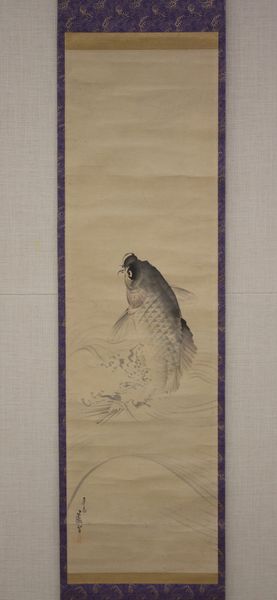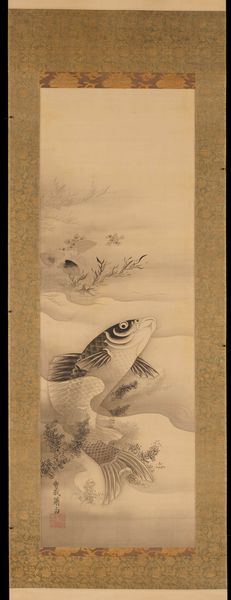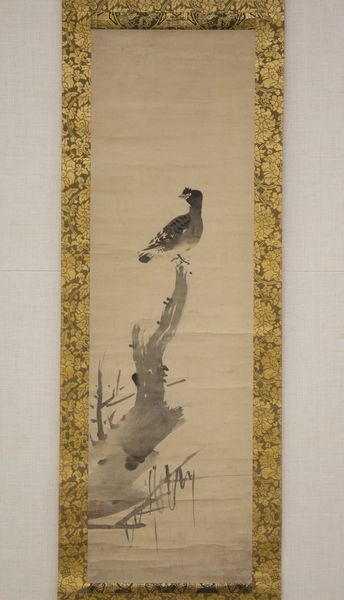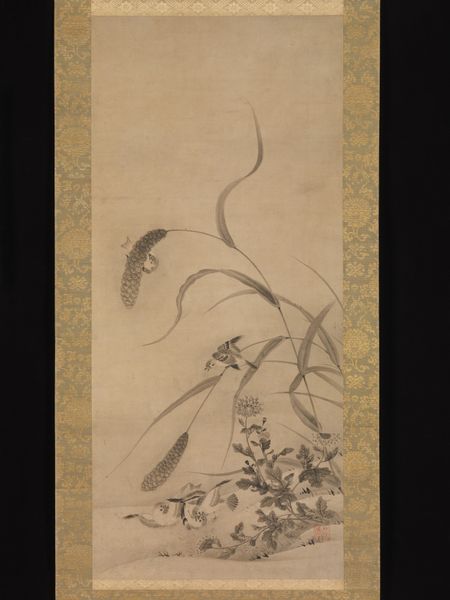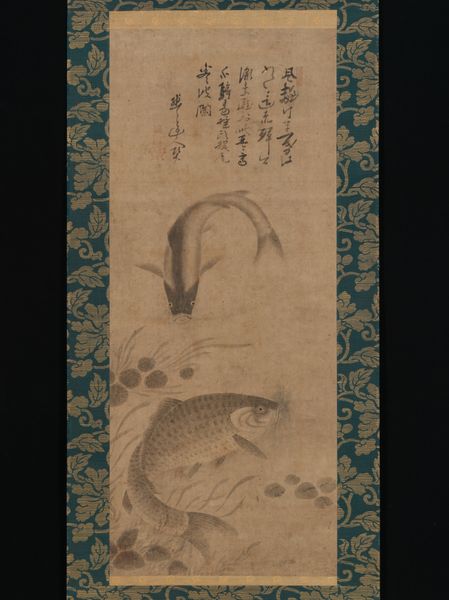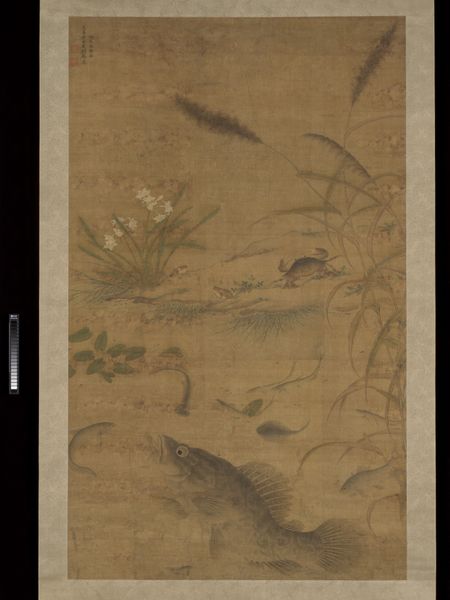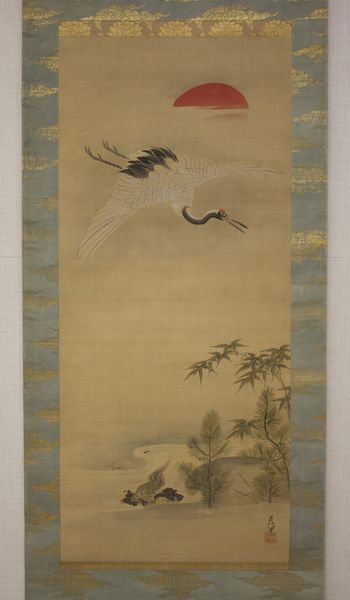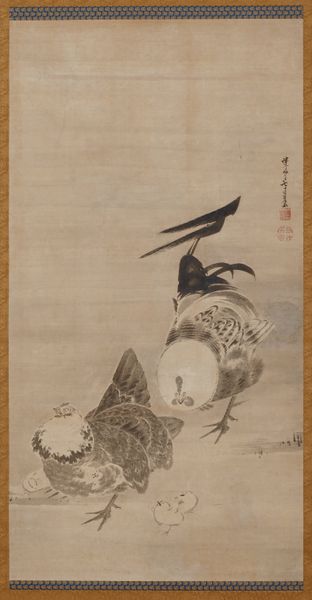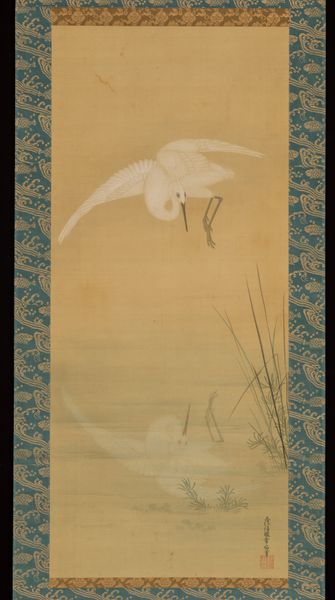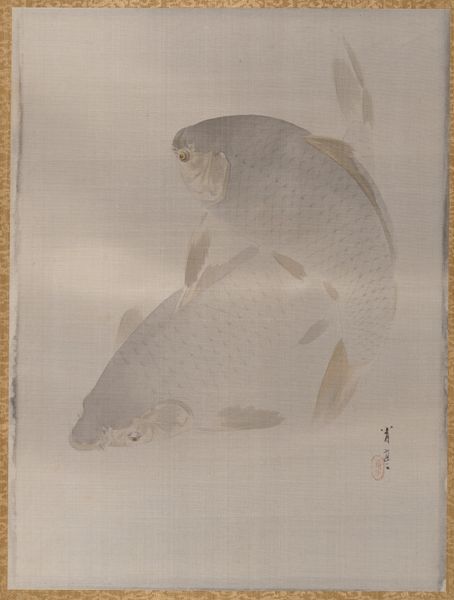
painting, watercolor
#
painting
#
asian-art
#
landscape
#
charcoal drawing
#
figuration
#
watercolor
#
line
#
yamato-e
Dimensions: Image: 47 1/16 × 18 13/16 in. (119.6 × 47.8 cm) Overall with mounting: 80 11/16 × 24 1/4 in. (205 × 61.6 cm) Overall with knobs: 80 11/16 × 26 11/16 in. (205 × 67.8 cm)
Copyright: Public Domain
Kano Yasunobu painted *Fish and Lotus* with ink and color on silk in Japan, sometime in the 17th century. This hanging scroll reflects the Kano school's blend of Chinese painting techniques with Japanese aesthetics, often serving the artistic needs of the shogunate. The careful depiction of carp swimming amidst lotus plants isn't just decorative. In Japanese culture, carp symbolize perseverance and success due to their ability to swim upstream, while the lotus represents purity and enlightenment. Together, they embody aspirations for personal growth. As court artists, the Kano school was deeply entrenched within the social and political structures of the Edo period. Their art not only reflected the values of the ruling elite, but also reinforced their authority through visual codes of moral and social order. To fully appreciate this work, we might turn to historical records of the Kano school, studies of Edo-period symbolism, and analyses of the social role that painting played in solidifying shogunate power.
Comments
No comments
Be the first to comment and join the conversation on the ultimate creative platform.
